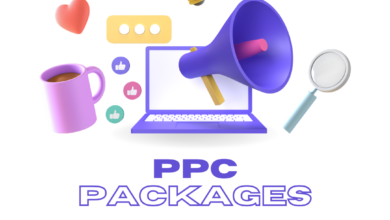Are You Asking the Right Questions About Your Fitness Website’s Design?

Whether you’re selling workout plans or offering group fitness classes, your website is a key tool for driving business and building relationships with clients. However, it’s important to make sure your site is well designed and optimized for search engines.
Many potential clients will have questions about your fitness services, such as how much classes cost or who is on staff. These calls can be disruptive and take up valuable time, but with a well-designed website, these inquiries can be answered online.
1. What Do You Want Your Website to Do?
Whether you’re running a gym, providing a personal training service, or offering online fitness classes, your website is a key tool for reaching and engaging your clients. A beautifully designed website reflects the quality of your work, inspires potential clients, and makes them want to sign up.
A well-designed homepage will showcase your best images and videos and introduce your audience to the style, vibe, and services you offer. You’ll also need a clear and informative “about us” page that showcases your mission, vision, and values. Including a bio with your contact information is a good way to make it easy for visitors to reach out to you or book a session.
Some of the most effective fitness websites include a testimonials section with positive quotes from past and current clients. Showcase their transformations through before and after pictures or video footage, which can help prospective clients feel more confident in your abilities. You can even stagger these across the site to encourage engagement, versus having them all tucked away in one testimonials page.
A well-designed website should also have a clear and visible “contact us” page that includes your phone number, email address, a physical address, and a social bar. Including a live chat option is another great way to engage with your visitors and answer questions in real-time.
2. What Are Your Competitors Doing?
If you’re looking to build a high-performing website that attracts and converts visitors, it’s best to work with a professional. They’ll create a custom design that matches your business goals, as well as specific user requirements. This provides a better user experience than sites that are created using a template, and will ensure that your site loads quickly and is easy to navigate.
Gym, fitness center and personal training websites need to have specific content that will attract potential members. This can include workouts, nutrition programs, healthy lifestyle tips and advice, and more. This helps to build trust with your visitors, and will help them decide if your gym is right for them.
A good place to start is by checking out what your competitors are doing. Look at their website to see what kind of design they have, what types of workouts they offer, and how they market themselves. This will give you a great idea of what to aim for when designing your own website.
If you’re looking for a fitness website, consider working with a professional who can help you design a beautiful and functional site that will attract and convert visitors into paying clients. They’ll have the knowledge and experience to create a site that will fit your needs and budget, and will be able to incorporate any unique features that you may want.
3. What Do You Want Your Website to Look Like?
A strong fitness website can keep current members engaged, increase the likelihood of new clients and make it easier to manage payments and scheduling. It can also boost the credibility of your business by establishing you as an expert in your field.
A standout fitness website includes a variety of visual elements that highlight your brand and make an impression on visitors. Your logo, photos and videos should be professional and align with the look and feel of your gym or studio. Your fitness website design should also include a “plans and pricing” page that showcases your membership packages and a contact form so visitors can easily get in touch.
Calls to action should be placed throughout your site and should be designed to encourage visitors to take the next step. For example, a call to action that promotes a free trial or assessment can help attract new clients and convert them into paying members. It’s also important to have clear links on every page so visitors can reach out via social media, email or phone.
Lastly, your website should be easy to navigate and compatible with mobile devices. A website that isn’t mobile friendly can be frustrating for visitors and cause them to leave your site.
Finally, a good fitness website should contain a blog where you can share workout tips and advice, feature success stories from your members, promote events or promotions and more. You can also use this space to publish testimonials from happy clients. Testimonials are one of the most effective ways to build trust and credibility with potential customers. Feature a mix of written and picture or video testimonials that showcase the results your members have achieved with their workouts.
4. What Are Your Goals for Your Website?
One of the most important things you can do when designing your website is to clearly define what your goals are. Some common goals include generating more sales, increasing the number of subscribers on your email list, or getting more people to visit your physical location.
The key is to set goals that are based on what your business needs and wants over the long-term. For example, if your goal is to generate more online sales, that might involve creating a landing page for each product or service you offer, and making it easy for potential customers to find. It might also mean increasing your search engine optimization so that your website can be found easily by potential customers.
Another goal that many businesses have is to build up their brand authority in their niche. It might also involve building up your social media presence and running targeted Facebook or Instagram ads.
5. What Are Your Budgets?
When designing a fitness website, it’s important to know your budgets. This will help you determine how much functionality to add and what features you can afford to include. For example, adding an online shop will cost more than a simple contact page. Also, keep in mind that you will likely need to pay for some initial expenses like business licenses and permits.
You may also want to consider adding some SEO techniques. This can help potential clients find your site online and increase your chances of getting new leads. Additionally, you will probably need to pay for some ongoing maintenance services.
It’s also essential to have a blog on your website. This can be a great way to share workouts, nutrition tips, expert interviews, and motivational articles with your audience. Keeping your website content fresh will also help you maintain a loyal following.
Whether you’re building a fitness website for yourself or a client, take the time to review other websites and create a design brief or mood board based on what you like most. This will help ensure that your final website looks and functions just how you imagined it.
Thanks for visiting blogscrolls



